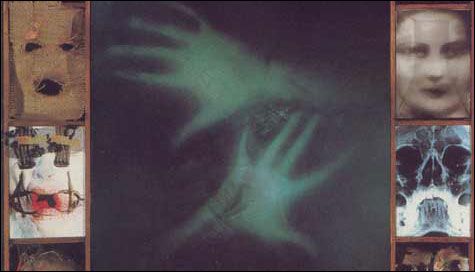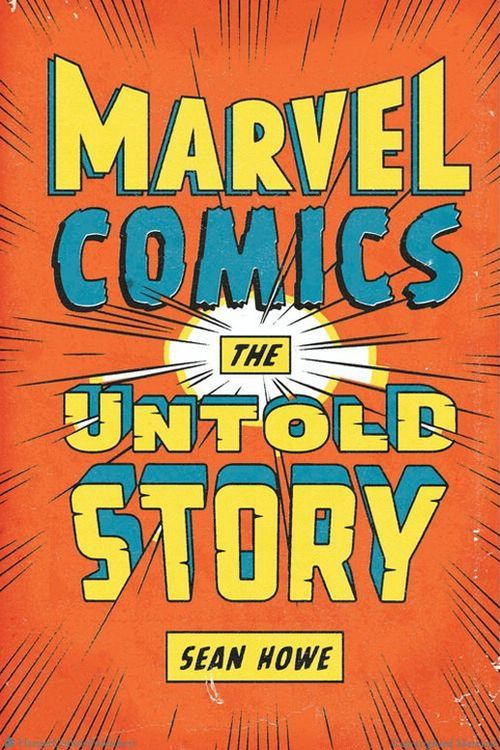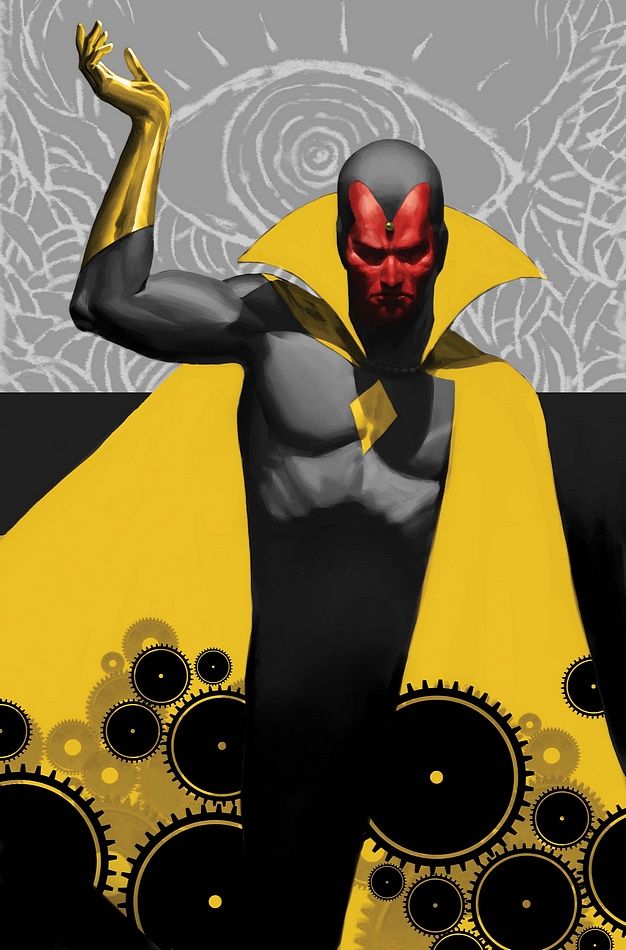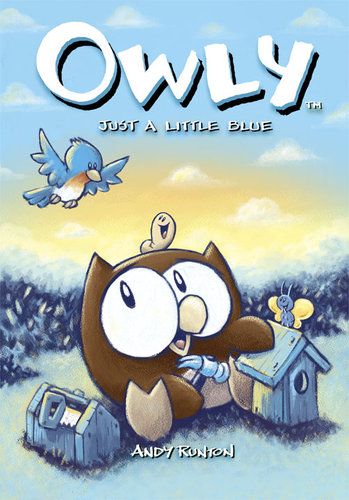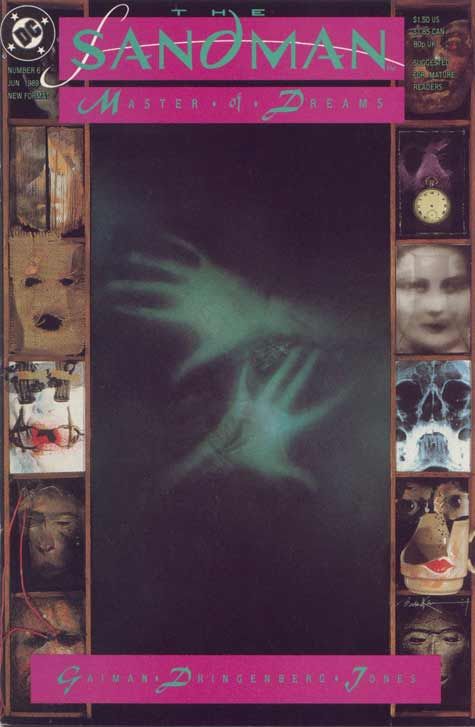Hello and welcome to What Are You Reading?, our weekly look at the comics, books and whatever else we've been checking out lately. Today we are joined by guest Evan Young, an "influential pioneer" of digital literature and creator of the digital graphic novel The Carrier. He's currently raising funds for his next project, The Last West, via Kickstarter, so head over there and check it out.
To see what Evan and the Robot 6 team have been reading, click below.
*****
Brigid Alverson
Here's a digital duo that's working for me: I'm reading Sean Howe's Marvel Comics: The Untold Story on the Kindle app on my iPad, and I'm also digging into the comics he references with the Marvel Unlimited app. I'm not too far into the book yet, but I'm liking it so far; it's informative and the writing is very readable. My one complaint would be the lack of illustrations, but the Marvel Unlimited app takes care of that. When Howe talked about the Human Torch and the Sub-Mariner making their debuts in Marvel Comics #1, I pulled up Marvel Comics #1 on the app. I'm fascinated with how crude the stories are--the plots are laughable, most of the art is bad, and the lettering is terrible--and yet at the same time, the way the storytelling has evolved already so that, for instance, the bottom right hand corner of each two-page spread is a cliffhanger of some sort. The stories, particularly the Human Torch, have the feeling that they were plotted as they went along, rather than in advance--Let's encase him in concrete! How will he escape from that?--and the ones that aren't the Human Torch and Sub-Mariner are just tedious. Still, it's a great thing to have the primary documents at hand when I'm reading a comics history book; I wish I had had a collection of Li'l Abner strips when I was reading Al Capp's bio.
Bad Girls is a prose/comics hybrid by the mother-daughter team of Jane Yolen and Heidi Stemple with art by Rebecca Guay, who is best known as an artist for the game Magic: The Gathering. Here she deploys a strong-lined, simple style to illustrate short stories of bad girls through history, from Delilah of the Old Testament (she persuaded Samson to cut his hair, which sapped his strength) to 1920s gangster moll Virginia Hill. The stories are written in simple language and focus closely on each woman's misdeeds--espionage, murder, thievery--all described with obvious relish. What really sets this book apart, though, are one-page comics at the end of each story in which Yolen and Stemple debate just how bad each bad girl is--pointing out that context is everything, that history determines whether a ruler or a spy is a hero or a villain, and that some of the women had few alternatives. They never justify the misdeeds, but I like it that they acknowledge that history is seldom black and white.
Tim O'Shea
Avengers Origins: Vision #1 : This was one of the 40+ free Marvel #1s I snagged this week. Basically a modern day updating of the Vision origin sticking to the previous versions. Why am I mentioning it? I really loved the art style of Stephane Perger and wonder if and when we might see more of his work at Marvel. I assume his painted art style precludes a monthly assignment, but here's hoping a miniseries in his pipeline at some point.
Uncanny Avengers #6: As a longtime mainstream comics fan, I will admit some of the appeal to the comics for me, is what is wrong with comics for many. In this case, an element that I most enjoy in this story is a plot device that plays (on some [albeit not great] level) of people's knowledge of continuity. Thor's brother Loki (the classic non-kid style) is the king of deception. His deception initially lead to the formation of the Avengers (granted not something you need to know for this story). But in this issue a key deception occurs when Kang appears to Thor as Loki. To see someone posing as Loki (instead of Loki misrepresenting himself) entertained me. Kudos to writer Rick Remender.
Secret Avengers #3: Another book where the small moments keep me entertained (not necessarily in service to the larger story). Writer Nick Spencer has artist Luke Ross draw a panel with a SHIELD helicarrier sign stating "It has been 192 days since our last helicarrier crash." Plus another quirky bit is how Mockingbird is brought into the story (I will not spoil that element for folks).
Corey Blake
Owly Vol. 2: Just A Little Blue by Andy Runton (Top Shelf Productions): Among the most adorable comics today, Andy Runton's Owly uses round shapes and expressive faces to warm hearts with nary an ounce of dialogue. The second in a series (a sixth is coming out this September), this one deals with a Owly and his sidekick Wormy trying to help a bluejay that doesn't want anything to do with them. With a generous heart the size of his big, round eyes, Owly innocently persists in helping the bluejay and his family have a warm and dry home. Characters fret, tear up and worry, but then bounce back with wide-eyed joy and hope. Clever iconography is used in place of traditional lettering, which takes a moment to adjust but it then works startlingly well, clearly communicating all of the story beats with more ease than comics with words crammed into every panel. It's definitely a quick read, but resist the urge to fly past panels. The story rewards soaking in each panel and enjoying Runton's sequences. A real heart warming pleasure.
You'll Never Know, Book Two: Collateral Damage by C. Tyler (Fantagraphics Books): Carol Tyler's trilogy of memoirs explores her father's World War II past and the trauma it inflicted upon the family and Carol's own family. It's a brave and vulnerable work fluidly told with grace and honesty, and it might be one of the most beautiful comics I've ever read. Carol employs storytelling devices I've seldom seen in comics. She naturally moves the reader through her emotional journey using a variety of lettering styles and artistic flourishes. And it is not an easy journey. Tyler doesn't go through the entire story chronologically because as humans we don't always process or fully understand events in a neat and orderly sequence. So the process of emotional discovery and realization carries us through a number of time jumps in both Carol's own life and her parents' lives. The scrap book/photo album design of the book is also used to great effect, as Tyler goes through family memories. Every family should give these books a try. The conversations they're bound to initiate will be priceless.
Kill All Monsters by Michael May and Jason Copland (Kamikaze Comics): This might be a bit incestuous but it was truly something I read this week. Our own May writes this webcomic about giant robots fighting giant monsters. It's a doozy of a high concept (Voltrons vs Godzillas!) and it looks great, thanks to Copland. He brings unique designs, rough and tumble action choreography, and characters real enough to care about. That's really the key of why this works. After the novelty buzz of the concept wears off, you're actually left with a world and people that you want to spend time and learn more. There's some mystery, some intrigue, some questioned motives, some social commentary, all lightly peppered throughout to keep the story chugging along even while the oversized slugfest takes a break.
Evan Young
More than every so often, I blow the dust off an old comic issue or a series I've particularly enjoyed and give it a second or third read. With Sandman, it's easy to pick out individual issues of the run that I love. For my money, it's tough to beat issue #6, "24 Hours," which I just went through again (10th time? 15th?). Neil Gaiman at his finest, at once flexing creepy, then turning to horror, then to erotic, then back to horror again. He uses the element of time fantastically, as well as an ever-so-subtly shifting point of view - sometimes telling the story as an omniscient narrator, sometimes telling the story through the warped prism of John Dee's mind. There are truly just so many great little touches in this one comic. A woman imagining herself licking her husband's decapitated head? I mean, come on. It's awesome. It remains the single scariest comic I've read not because of the gore or blood, but because it's just incredibly creepy.
Also in the creep vein, I just wrapped World War Z: An Oral History of the Zombie War by Max Brooks. I thought it was fast entertainment with an imaginative spin on your typical zombie story. I like that Brooks went global with it, the attention he gave to how modern weaponry and military strategies might have to be rethought to handle "Zack." Plus there's that entire chapter about a blind Japanese man surviving up in the hills, which was all pretty cool. His writing itself gets the job done and is a little rough at times, but overall it went quick and was interesting throughout. Good airport reading.
180-degrees from either of these, I've read through all of what comic book creator Ramsey Beyer has made available online of her comic Year One. (Full disclosure: Ramsey nannied for us for a while while she was working on the book.) It's a black-and-white autobiographical comic that walks you through the author's moments - a move from one city to another, relationship ups and downs. What strikes me about Ramsey's work is that she shows an innate prowess for visual storytelling that I think is pretty original. She plays with perspective and use of blacks in ways that seem to come naturally. I hope we see more from her.
Lastly, I just finished On Writing by Stephen King, finally. Fascinating and incredibly impactful. I won't be able to add anything about this that a lot of other people haven't already covered, but if you happen to be a writer and you haven't read this yet, do yourself a favor and put it at the top of your pile.

